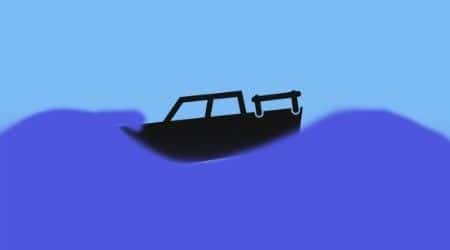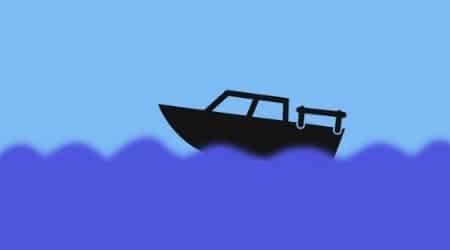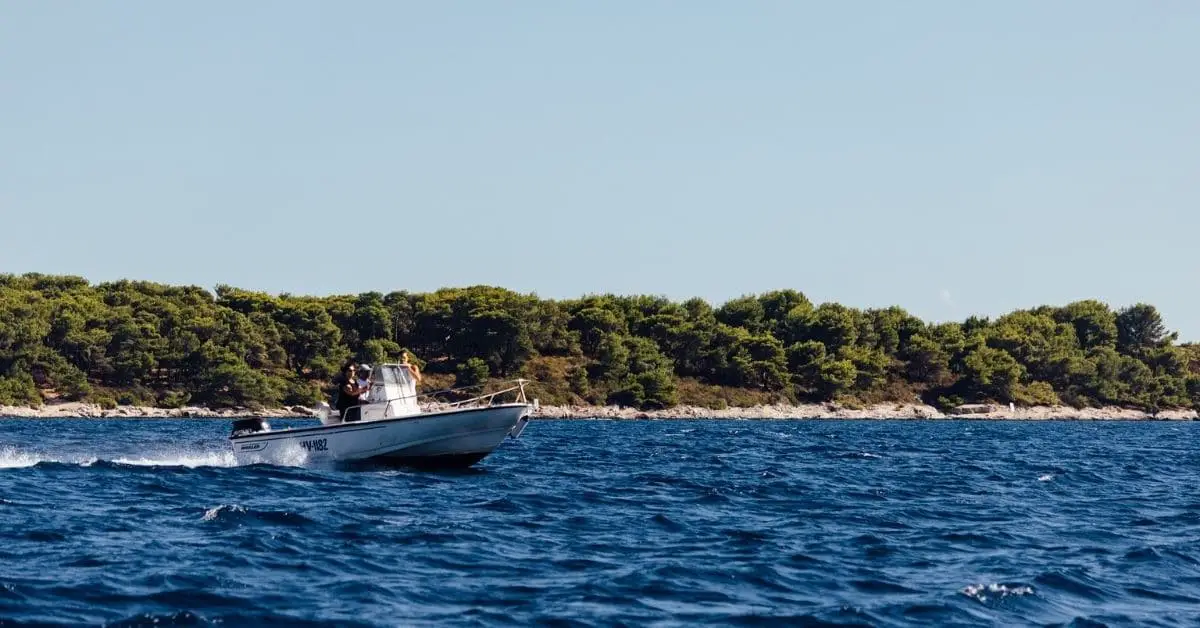If you’re like me, you don’t usually let the wind deter you from heading out on the water on your one Saturday afternoon a week. Although there are times that the wind is so strong it makes boating unsafe, there are plenty of tips and tricks you can learn to make boating in the wind a breeze.
Wind and waves affect different boats differently, but in general, wind speeds 20 knots (23mph) or over, and waves larger than 1/3 the length of your boat is usually considered too strong for boating. Wind speeds slightly less than that are still quite hard to manage and could be dangerous to boaters (especially inexperienced ones).
Boating experience is defiantly the most useful thing that will help you out with boating and docking in the wind. However, if you are still learning, this article will give you exactly what you need to know to become a better and more experienced boat captain.
7 tips to make boating in the wind and waves easier
These tips are for boating out in the windy sea, if you want to check out the docking in wind and waves tips, either scroll down or click here to skip to it.
1. Position your boat at a 45 degree angle to the waves
If you can’t skip over the waves, position your boat at a 45-degree angle. This way you have more space from wave to wave making it much smoother of a ride.
2. Get near the shore where the wind and waves are coming from
When it gets wavy, it’s always a good idea to get near shore to be closer to safety in case something goes wrong. If you want to be closer to safety and out of the big waves, it’s best to head to the shore from which the waves are coming. This water will be much calmer as the waves are just beginning to form and have yet to reach a large size.
3. Surf the wave when boating with the waves
Using the surf method, you cannot go fast but it’s one the most effective ways to travel in big waves without it really feeling like you’re traveling in big waves. In order to surf a wave, you simply just travel at the same speed or slightly less than what the waves are traveling. This will keep you on the wave, and avoid you from crashing into the wave in front of it.
Here’s a drawing of what it would look like:
Note: you don’t want to be driving any faster than the waves in order to avoid stuffing your nose into the wave in the front.
4. Raise your trim when boating with the waves
If you don’t feel like going slow and surfing when going in the same direction as the waves, if you raise your trim you can effectively ride on top of them. The reason you raise your trim is so that your bow stays up and avoids getting stuffed into waves when riding over them.
What will happen if you lower your trim:

What will happen if you raise your trim:

5. Don’t be afraid of speeding up when traveling into the waves
If the waves are tight and not very spread out, many times if you speed up you can effectively just skip over them. This is great for many lakes as the swells tend to be much tighter than the ocean. While doing this, if your boat seems to be bouncing up and down a lot, lower your trim until you find the sweet spot where your boat isn’t bouncing much.
Example of tight waves

Even if the waves aren’t very tight, if you go too slow, you will probably get wet as water will go over the bow. Play around with your speed and trim in order to find that perfect speed to navigate as smoothly as possible.
6. Learn how to be on and off the throttle when traveling into big swells
If the waves aren’t tight and you can’t just skip over them, you may have to be on and off the throttle depending on what part of the wave your boat is on. Right before you hit a big wave, throttle down and let the boat slowly rise above the wave and smoothly go off it. You want to make sure your boat isn’t catching any air.
7. Ride the trough of the wave when boating sideways to the waves
Boating sideways to the way the waves are traveling is usually not ideal, but if you have to do it, traveling in the trough of waves is the way how. The trough is the lowest part of the wave, this is the calmest spot.
Here is a boat heading through the trough of the wave:

7 tips to make docking in the wind and waves easier
Before reading any of these tips, understand that docking in the wind is very hard and it is going to take practice in order to get it down. I’ve put many scratches in my boat throughout the years (and I am continuing to) because of how hard it is to properly read the wind when docking your boat.
1. Use the wind to your advantage
If you position yourself correctly when the wind is blowing towards the dock, you can drift right into docking position. This is one of the easiest ways to dock during windy conditions.
2. Visualize your path before hand
Sometimes there may be obstacles such as other boats and docks in the way of your slip. So you will need to test out how where the wind is coming from and how fast the wind is pushing the boat before you begin docking. This way you can get a better feel for what to expect when you are about to dock.
3. Don’t be afraid to hit the dock if there are fenders
When the wind is blowing you away from the dock, many times it’s best to actually press your bow on the dock first before swinging the stern into position. If you have proper fenders, you won’t have to worry about scratching your boat on the dock.
4. If you have a large boat, watch this video
It takes strategy to dock a big boat, it takes great skills and strategy to dock a big boat in the wind. One of the best ways to learn these skills and strategies is from watching other people do them such as in the video below.
5. Install bow thrusters
Bow thrusters are almost a must-have in larger boats as it is extremely hard to control them if they are not installed. You can pay many dealers to install them for you, or you can get a kit like this one here that you can install yourself.
6. Get help from the dock
Fortunately, if the marina is busy, there will be many people perfectly willing to give you a hand and help you dock your boat. Along with that many marinas have designated workers that will help you dock (you just might have to tip them).
If there is nobody at the dock, driving your bow up to the dock and letting someone off before you try and dock might be a good idea. It’s always easier to throw someone a line who’s on shore than to do it all yourself.
7. Read this article
Discover Boating has created a good article to teach you exactly how to dock in all the different wind conditions. You can check it out by clicking here.
What kind of boats handle the best in the wind and waves?
When determining this, we have to look at both wind and waves. Some boats may handle great in very windy conditions, but poorly in wavy conditions.
So the best boat for windy conditions is a bass boat or any boat with low sides that won’t catch much of the wind. However, bass boats aren’t very good in big waves. When it comes to large waves, boats with big V-shaped hulls will be the best (the bigger the better).
For example, a Deep-V fishing boat will be much better in large waves than a bass boat, but a bass boat will be less affected by the wind because there is less surface area for the wind to hit.
If there was an all-around boat that is good at handling in both the wind and the waves, center consoles and muscle boats are probably going to be the best. These boats are large enough and built well enough to handle big waves, but also are not so big that they catch the wind like a sailboat.
How much wind is too windy for boating?
The answer obviously depends on the size of your boat and the size of the waves but in general, wind speeds over 20 knots (23 mph) are too windy for boating. At this wind speed, almost all-size boats will be greatly affected, and smaller boats may even be in danger of capsizing.
Larger boats can still navigate with wind speeds over 20 knots, but trust me it won’t be comfortable. However, once wind speeds hit 34 knots (39mph), then it’s starting to really be dangerous and no boater should be on the water. (data from: weather.gov)
If you want to know more about wind and its effects on different boats, check out this article I wrote.
What wind speed is the best for boating?
As I said above, you don’t really want to go boating unless the wind is under 20 knots. If you are boating (not sailing) then the lower the speed of the wind the better. Wind is one of the biggest annoyances that every boater must face, but if you know what you are doing, it can be dealt with quite well.
- What Is The Cheapest Way To Store A Boat? - February 28, 2023
- Do Boats Need Bottom Paint? (Uncovering the Truth) - February 2, 2023
- How Much Is Bass Boat Insurance? (Real Quotes) - January 18, 2023


